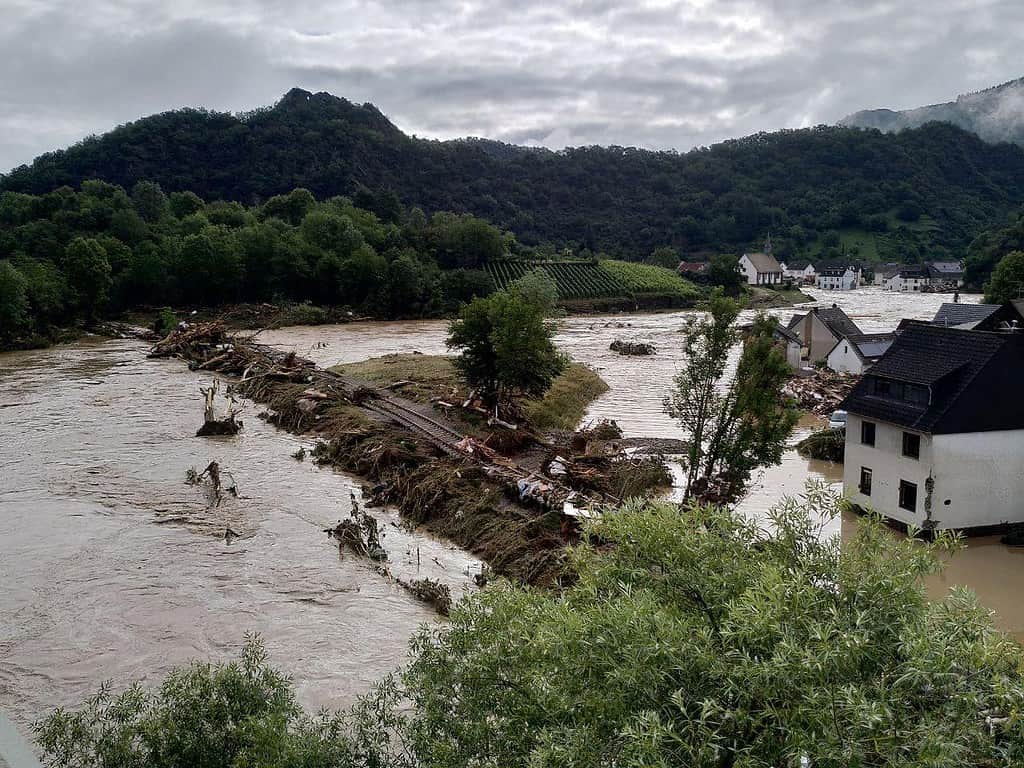
Floods — even big floods — often take people by surprise. But, according to a new study, many floods could actually be predicted. The key is simply looking at the bigger picture, not just national data.
Fight floods with data
Megafloods, catastrophic in nature and often exceeding historical records, have long posed a challenge for many local communities. Traditional methods, largely confined within national borders, struggle to predict such events due to limited data and a misunderstanding of flood generation processes at extreme levels. But what if simply by looking at a broader picture, we could foresee these floods?
That’s the premise of a new study spearheaded by Miriam Bertola, from Technische Universität Wien in Austria.
This innovative study focused on Europe. Scientists analyzed river discharge observations from over 8,000 gauging stations across Europe. The analyzed data spanned from 1821 to 2021. Surprisingly, 95.5% of recent megafloods fell within the estimated ranges of previous floods in similar locations on the continent. In other words, 95.5% of big floods can be predicted by looking at continental-level data.
This indicates that what might come as a surprise in a local area is less surprising on a continental scale. This finding is consistent over time, suggesting that the approach could have already been applied.
Finding flooding outliers
The study’s success hinges on the concept of hydrological similarity.
“In each river basin we can learn from other areas that have similar climatic and hydrological characteristics where megafloods may have already occurred,” says Bertola.
Essentially, catchments with similar flood generation processes tend to produce similar outliers. The floods that are usually big and unpredictable are called ‘outliers’ because national data can’t predict them.
“It is important to consider not only geographically adjacent areas but also areas with similar conditions — these may also be located further away,” emphasizes study leader Günter Blöschl, also from the same university. “It is therefore essential to move beyond national flood-risk assessment and share information on megafloods across countries and continents, to reduce the surprise factor of their occurrence and save lives.”
If you look at the historical flood data of multiple areas simultaneously, the pattern starts to emerge. Locally surprising “megafloods” are often not that surprising when also considering the previous floods observed in similar regions. Look at enough data and the statistical outlier at the local scale becomes something expected at the continental scale.
A game changer for flooding
These examples demonstrate how integrating data from a broader geographic scope can yield more accurate predictions and better preparedness strategies.
By transcending national boundaries and learning from flood events across Europe, it becomes possible to reduce the element of surprise and increase preparedness. This approach not only saves lives but also enhances our understanding of flood risk management on a larger scale.
It is unclear whether the findings carry over to other continents as well. But the idea of looking at larger-scale data to predict flooding seems like a sound one that can yield benefits. In doing so, we can significantly reduce the surprise factor of megaflood occurrences, increase flood risk awareness, and enhance the preparedness of flood risk management on a global scale.
Getting stuck within national borders just doesn’t work anymore. If we want to address this type of hazard, we need to cast a wider net.
“The underlying concept of the study is that catchments with similar flood generation processes produce similar outliers. It is thus essential to transcend national boundaries and learn from other places across the continent to avoid surprises and save lives,” the researchers conclude.
Journal Reference: Megafloods in Europe can be anticipated from observations in hydrologically similar catchments. Nature Geoscience, 2023; 16 (11): 982 DOI: 10.1038/s41561-023-01300-5




